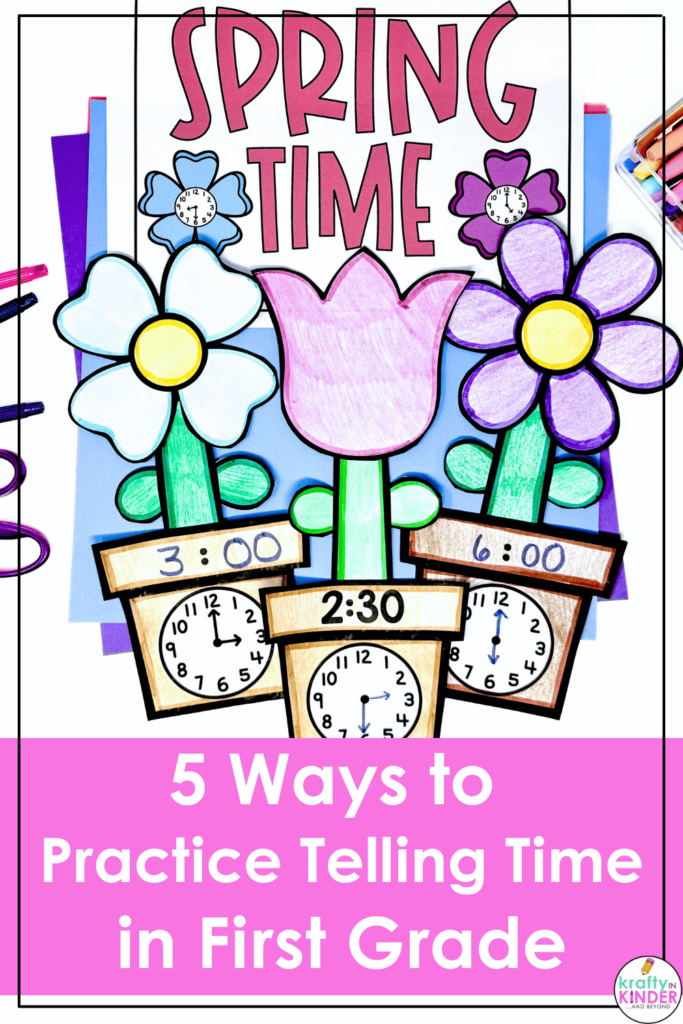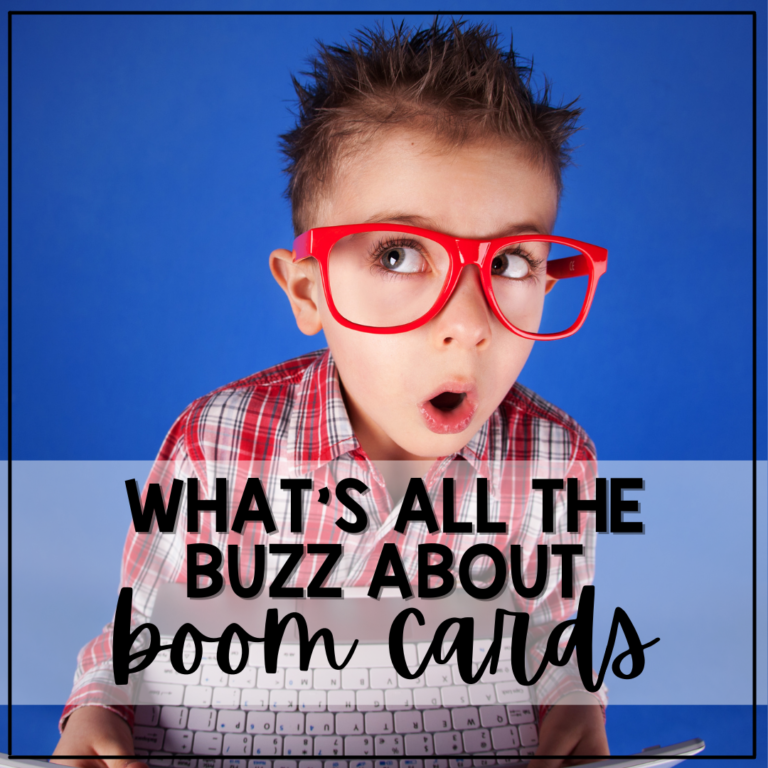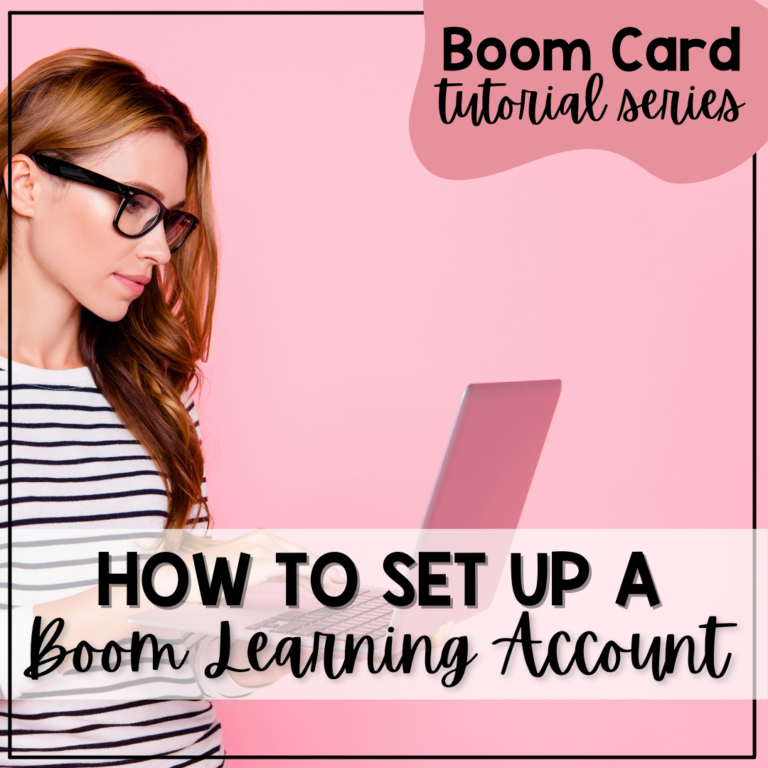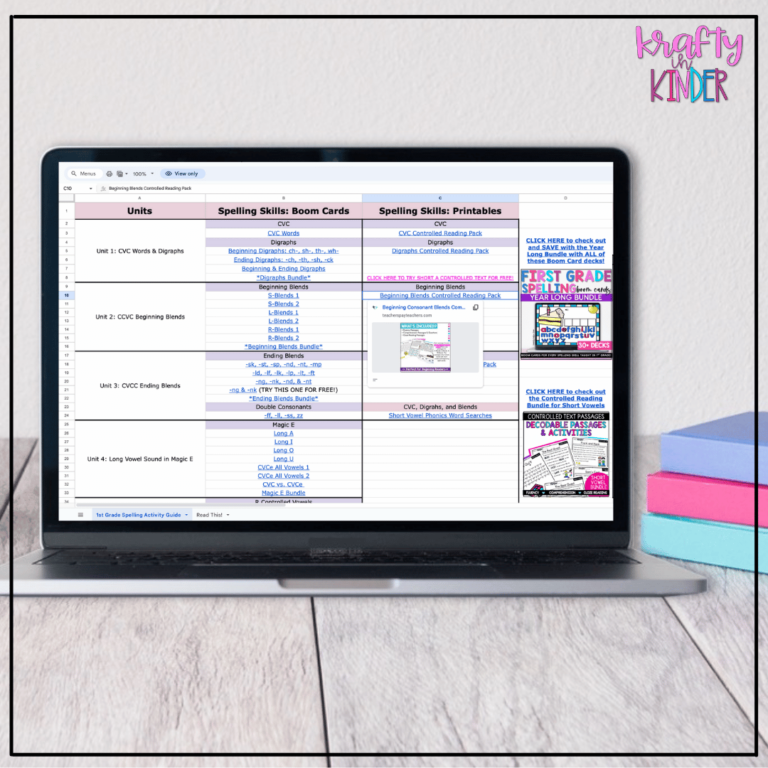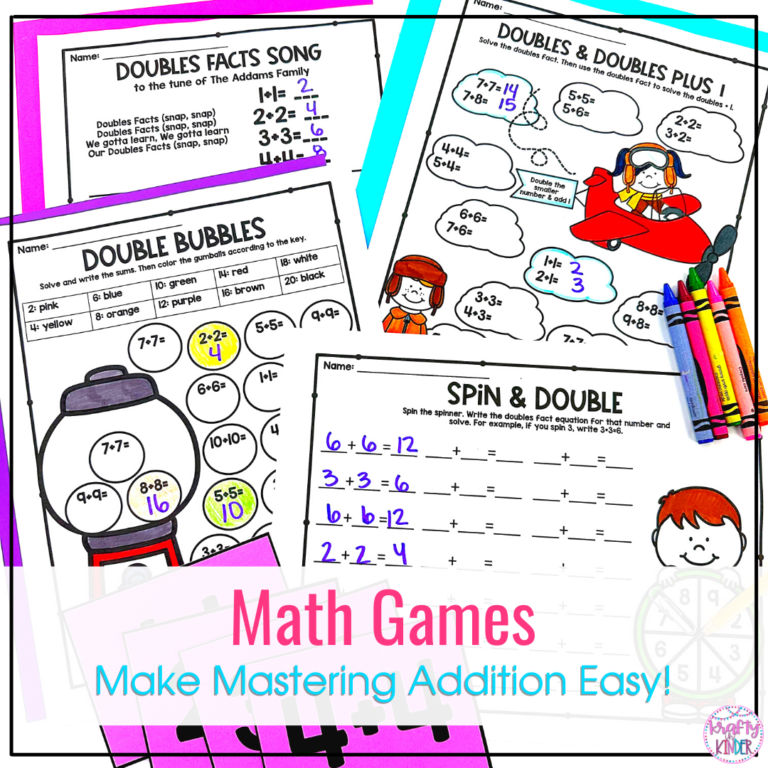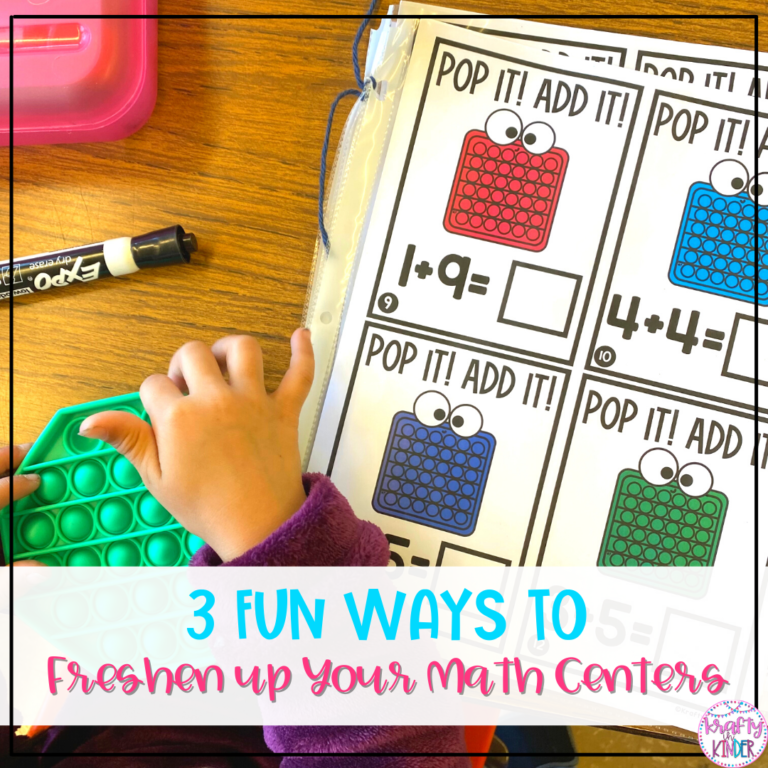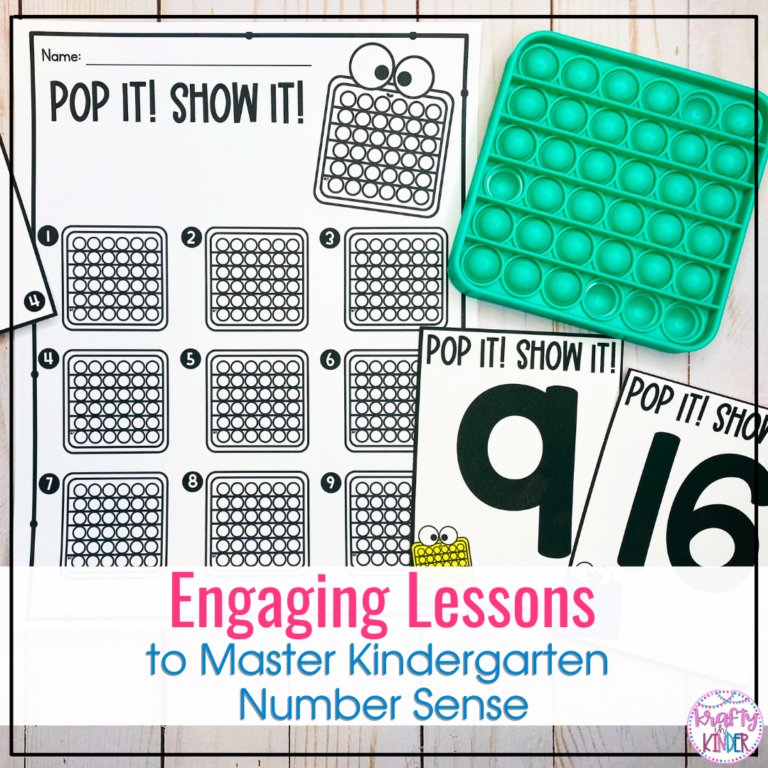5 Ways to Practice Telling Time in First Grade
Time is a math skill that is often introduced towards the end of first grade. In the beginning, this can feel daunting to young students, but it’s oh so exciting, too! After all, your students probably ask you “How much longer ’til. . . ” all the time, right? Learning to tell time opens up a new level of independence that your students will absolutely love! If you’re new to this topic, never fear! I’ve got 5 fun ways to practice telling time with your first graders!
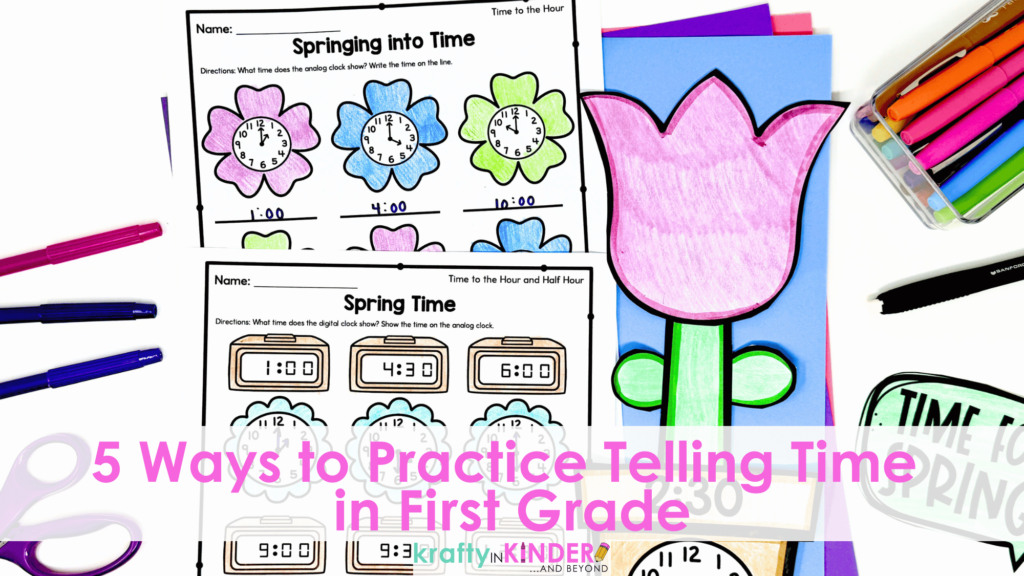
Time for Telling Time
Learning all about telling time is going to be a lot of fun for your students. Most kids want to know what time it is, so they’re always pretty excited about this lesson! As a teacher, I look forward to working on telling time in first grade. It’s a great topic to keep engagement high as the year comes to a close. The key to success is a blend of activities that will spark interest in your classroom. Over the years, I’ve found a few that are always a hit! Let’s take a closer look at telling time in the first grade classroom.
1. Use a Fun Intro Video
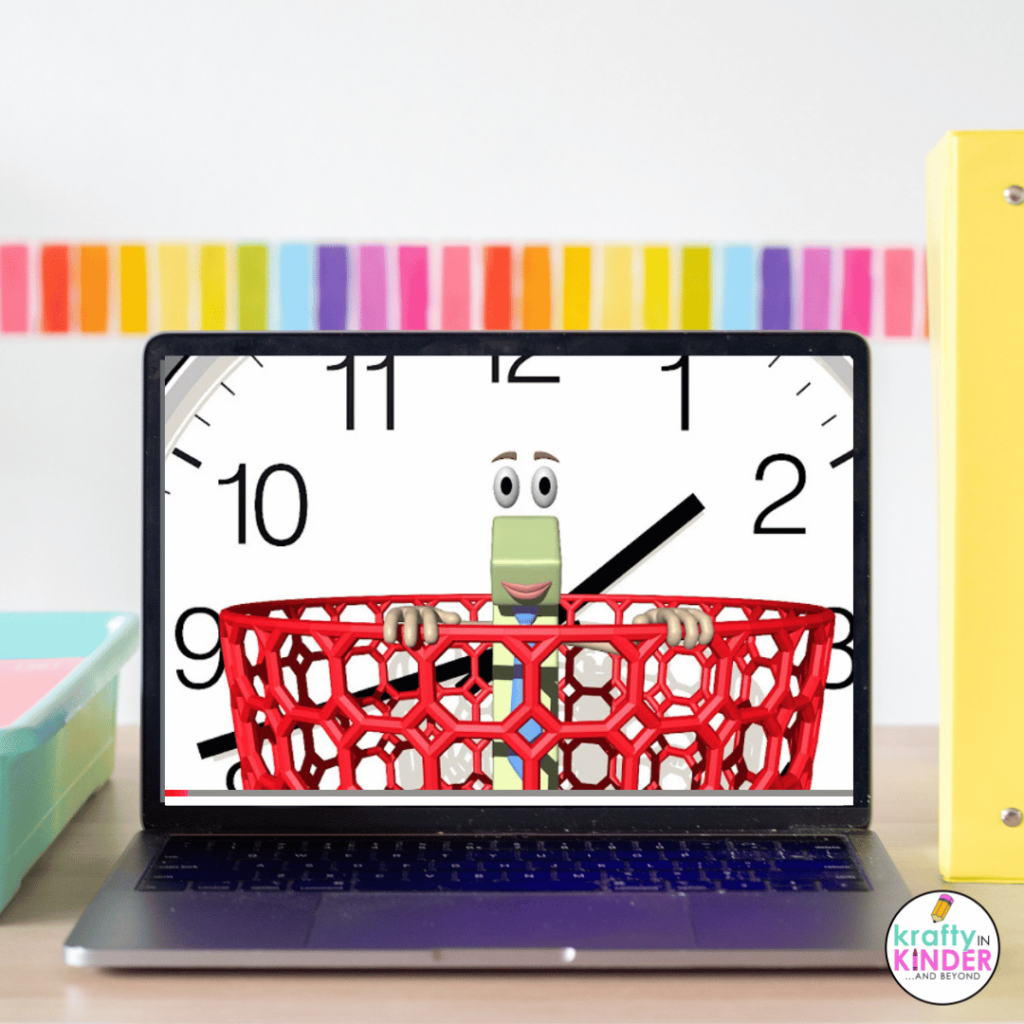
Before we can get started telling time, we need a great introduction to snag attention. My favorite way to introduce the concept of telling time is with a fun video. It makes this concept approachable and easy to visualize for my students. There are SO many great videos on YouTube, but here’s one that I like to start with. It focuses on key vocabulary, parts of the clock, and all the basics your students need to know to get started.
After watching the video, you can have a group discussion about why telling time is valuable. I like to make an anchor chart and list some of the reasons why we need to know the time. I also ask the kids to think about what would happen if we didn’t keep track of time. This short discussion gets my kids excited to learn more about telling time because they want to avoid all the problems we bring up! It’s a simple way to “hook them” before you begin your lessons.
After that, try another video that focuses on telling time to the half hour. In first grade, this is what we focus on, so it will serve as a great introduction. That particular video is created by the same YouTube channel, and I know your kids will love it! There are tons of other great resources online, as well as some catchy songs that students will enjoy singing along to.
2. Invest in a Practice Clock
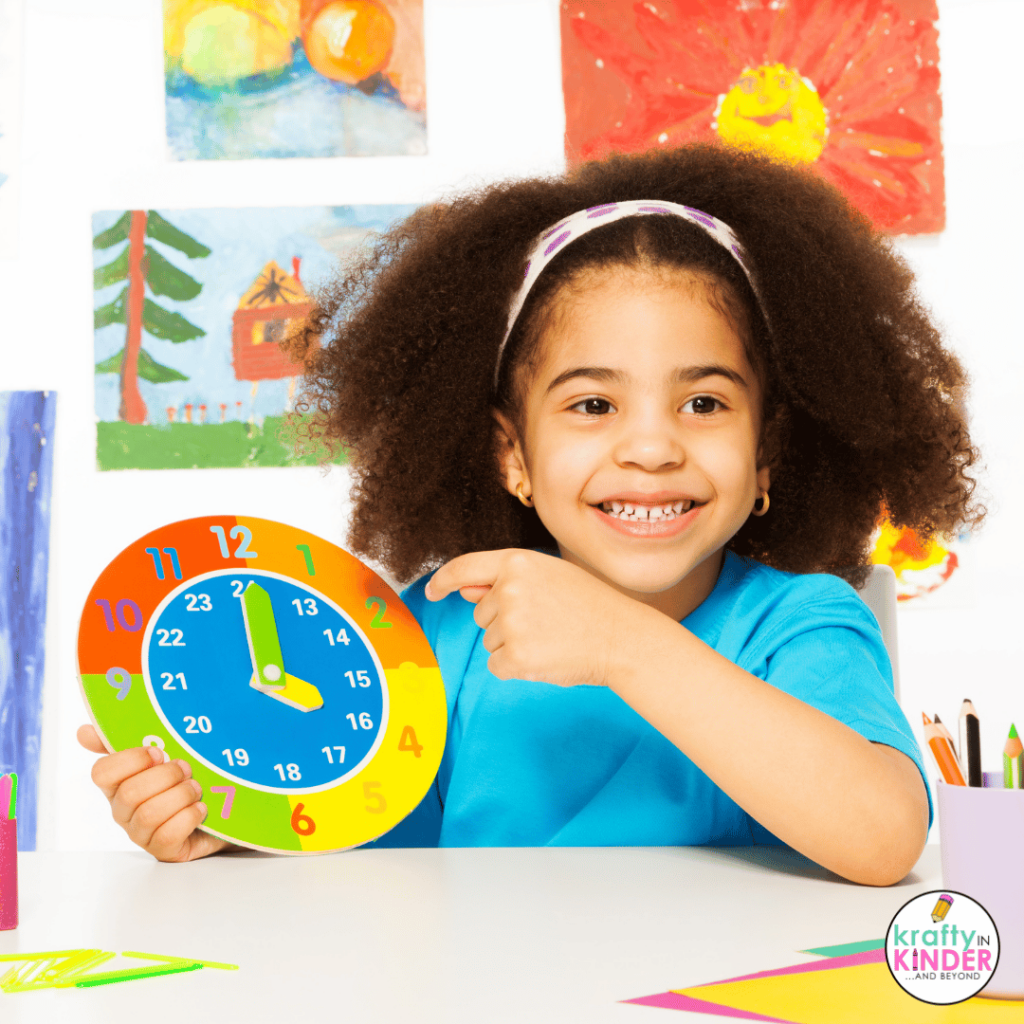
After introducing the concept of telling time in your room and getting comfortable with key vocabulary, it’s time to practice! I am a big fan of hands-on learning in first grade, and practice clocks are the perfect way to do this when you are teaching this skill. I like to use a large one for modeling to the whole class as well as small ones that students can use at their desks.
These tools are great for allowing students to get comfortable with clocks and moving the hands to show specific times. I like to use our classroom schedule as an example as we use the clocks. First, I write out our daily schedule on a piece of chart paper or up on the board. Then, one by one, I add the time we do each thing, making sure to keep it general and to the hour. As you do this, model the time on the clock and encourage the students to do the same on their mini clocks. This exercise will help them get comfortable with each hand on the clock and attach meaning to specific times of day.
These teaching clocks are also useful tools for center time activities or alongside worksheets, so I highly recommend getting some. Your school or library may also have these available for teachers to borrow, so be sure to ask around!
3. Try Telling Time with Boom Cards

Another way to practice telling time and working with clocks is with digital activities. If you know me, you probably already know how much I love Boom Cards! They offer an engaging way to target just about any skill you can think of, plus they require no additional prep. Oh, and did I mention that students love them? There are SO many reasons to love Boom Cards!
When it comes to telling time, I use this bundle of Boom Cards to make the process more fun. Inside, you get 7 different decks that target a variety of important skills. Students will have tasks to work on, such as telling time to the hour and half hour, measuring time in units, and working with analog and digital clocks. No matter what you need to focus on, there’s something here for you!
I use these in a few different ways in my room. First, I find Boom Cards to be an excellent way to model new skills and teach. When getting started with telling time, I will often use these cards to show students specific things and provide examples. I can easily project them up on the SmartBoard and use them as visuals and practice problems during out lesson.
Then, students can use them for telling time skills practice during center time. They access the cards on a computer or tablet and utilize the audio directions to read each slide aloud. This is such a great feature because it allows for independence with these activities!
4. Weave in Hands-On Learning Games
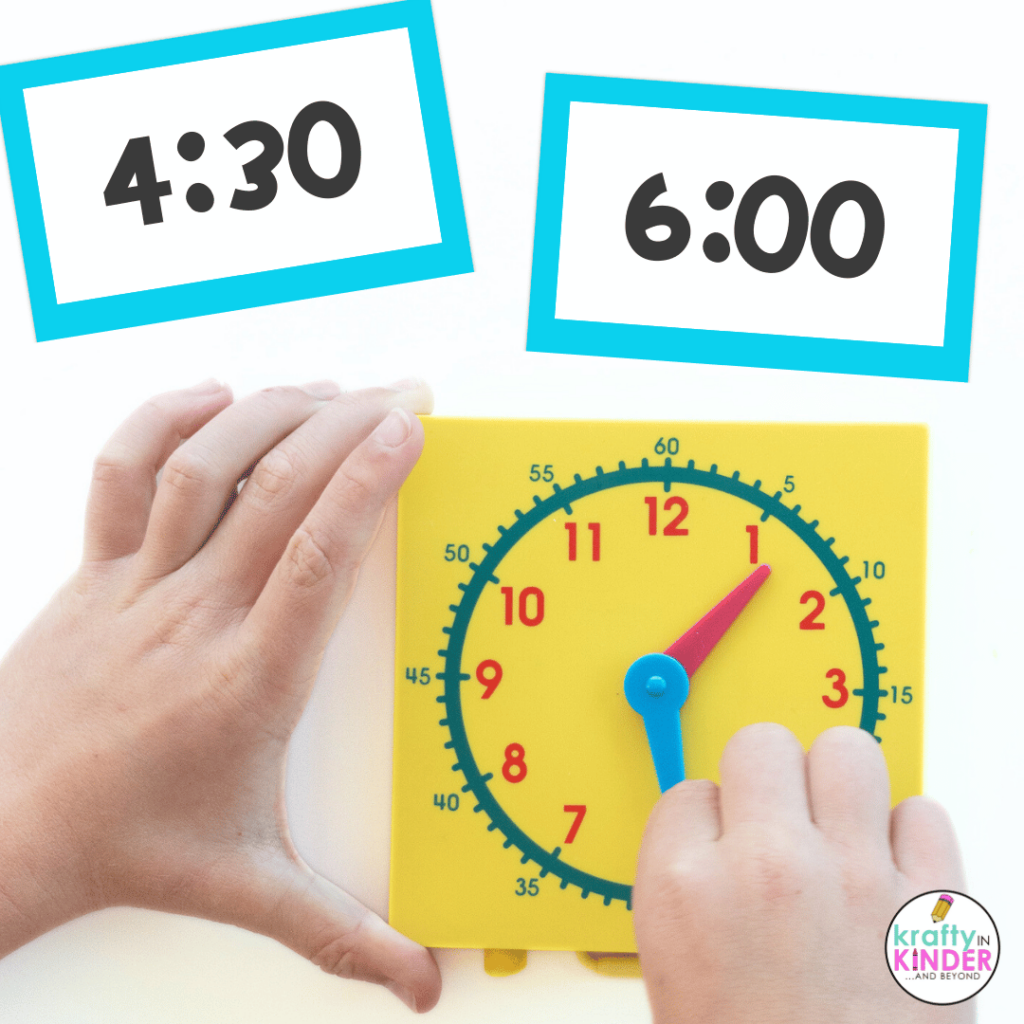
Aside from using Boom Cards, you can also weave in some hands-on learning games for telling time. Here are a couple of quick and easy ideas you can use in your classroom.
- Write digital times on index cards and ask students to use the analog practice clocks to show them. You can easily adjust the time cards to match the skill level of your students.
- Give each student 2 index cards. Have them write the digital time on one card and draw a clock showing the same time on the other. Not only do you get a quick check of their understanding, but they just made a matching game that you can add to your math centers. Put all of the cards together to use a telling time memory matching game the kids can play.
- Laminate a picture of a blank clock to use as a playdough mat. Add some time cards and let students build the time on the clock using playdough.
No matter what you decide to include, the key is to find a variety of ways for students to practice! The more ways we can make telling time fun, the more likely the skills are to stick.
5. Use Crafts for Telling Time
I’ve got one more way to target telling time in your room that you might not have thought of. . . crafts! I love learning crafts because they take something we’ve been practicing in the classroom and put a brand new spin on it. In fact, we have so much fun in my room with this that I have math crafts to use all year long. It’s such a fun way to practice math!
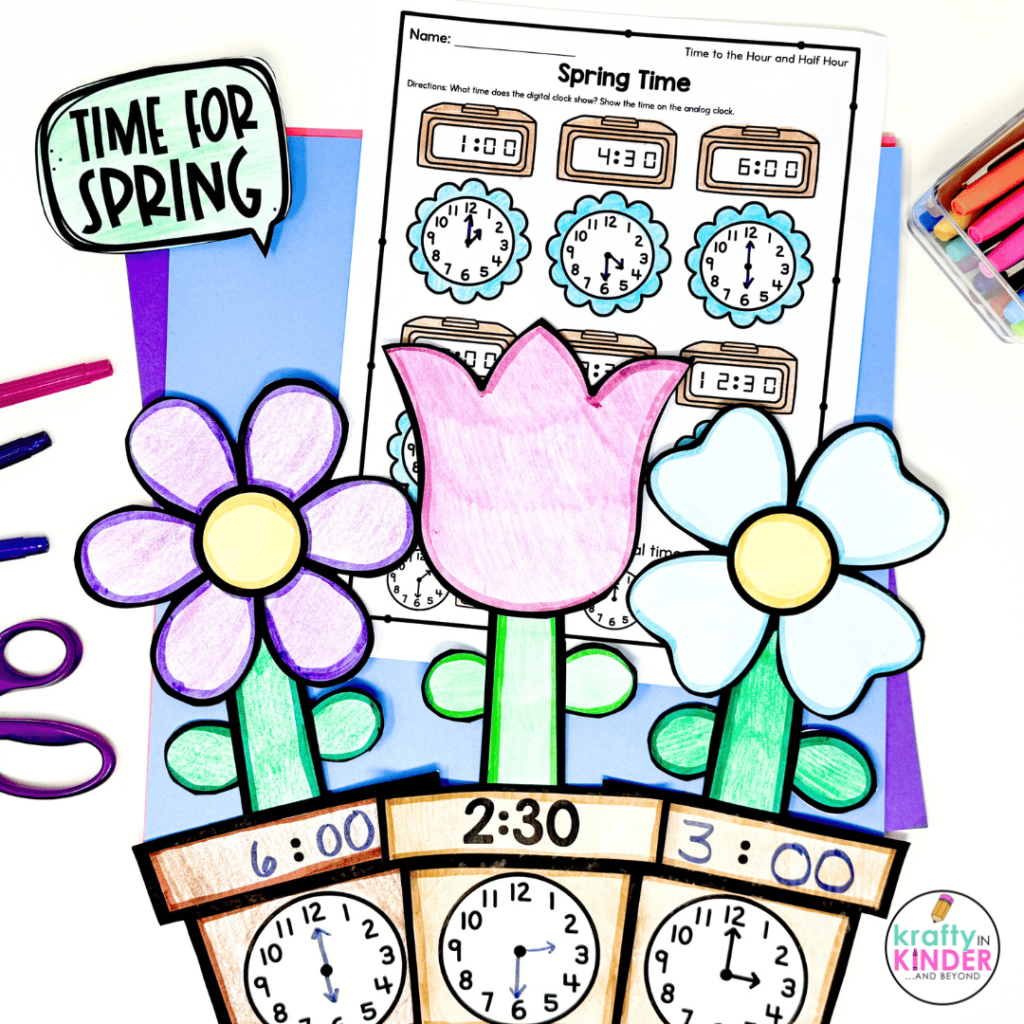
For telling time, we use this Spring Time Craft. It focuses on telling time to the hour and half hour. When using it in your classroom, it can be made by telling time to the hour, telling time to the half-hour, or both! We often use my math crafts more than once for additional practice. Since there are multiple options, it’s easy to differentiate as well. Everyone can work on a craft that’s aligned with their skill level.
Students will complete the analog or digital clock to match the time on their flower pot. Once they are done, they get to color, cut, and assemble the whole thing. I’ve also included materials to make this into a fun springtime bulletin board display, too! Your students will love seeing their work displayed under the header that reads “Time for Spring”.
Beyond the craft itself, there are also practice pages included with this resource. These are great for continued practice that can be assigned for morning work, centers, homework, or fast finishers. To check out more math crafts, be sure to take a peek at the bundle. These activities make practicing and reviewing important math skills more fun!
Telling Time in First Grade is Fun!
I hope this post is helpful to you as you get started with telling time in first grade. This is one of my favorite math lessons, and I know that with the right blend of activities, you’ll enjoy it too! Have fun working on telling time with your students, and don’t forget, if you need some more activity inspiration, you can find all of these activities in my TPT Shop.
Save This Post
Make sure to pin this post on Pinterest so that you can keep track of these ideas for telling time!
